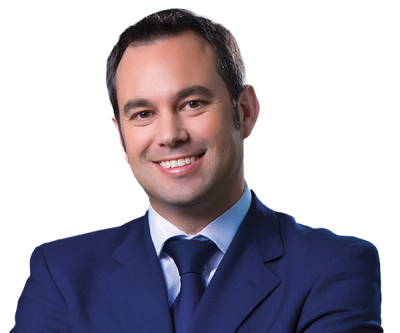
CIMA publishes regulatory procedures for de-registration of Cayman Islands investment funds
CIMA 发布开曼群岛投资基金注销登记监管程序
In August 2022, following a period of industry consultation, the Cayman Islands Monetary Authority (“CIMA”) has published a set of revised rules and regulatory procedures (together, the “Procedures”) on the cancellation of licences or certificates of registration for regulated mutual funds (“mutual funds”) and registered private funds (“private funds”).
2022 年 8 月,经业界反复磋商,开曼群岛金融管理局(Cayman Islands Monetary Authority,以下简称为“CIMA”)发布了一套修订版规则和监管程序(统称为“程序”),适用于注销受监管共同基金(以下简称为“共同基金”)和已登记私募基金(以下简称为“私募基金)的许可证或登记证书。该程序体现了共同基金注销登记流程中的相关修订,并首次制定了私募基金注销登记流程,旨在为受监管基金创建一套精简、协调的管理制度。
The Procedures reflect updates to the de-registration process for mutual funds and establish for the first time the de-registration process for private funds, which aim to create a streamlined and harmonised regime for regulated funds.
Key changes to the regime
The main changes to the de-registration regime relate to the removal of the interim “License under Termination” (LUT) or “License under Liquidation” (LUL) status during a fund’s de-registration process. Previously, a fund which had submitted some but not all of its de-registration documents would generally be removed from “Active” status and placed under LUT or LUL status, and would then be eligible for a 50% reduction in CIMA’s annual fees pending completion of the de-registration. There is no longer an interim status under the updated Procedures. A fund will remain fully registered, and thus liable for the full amount of CIMA’s annual fees, until it has completed the de-registration process and its certificate of registration has been formally cancelled by CIMA.
Documents to be submitted
The documents required to be submitted to CIMA for the de-registration of a fund remain substantially the same under the new regime, with amendments providing flexibility for typical private funds.
In the case of a mutual fund or a private fund which intends to be de-registered on the basis that it has ceased to carry on business, the following must be provided to CIMA:
- the original certificate of registration, if any, or an affidavit from the operator of the fund in the case of a lost original certificate – CIMA has clarified in the Procedures that this requirement is not applicable where only an electronic certificate (including any certificate of change of name) has been issued;
- a certified copy of the resolution (or equivalent) signed by the operator and/or the investors which indicates the date on which the fund will cease or has ceased to carry on business as a fund in or from the Cayman Islands (meaning there is no ongoing investing with a view to receive profits or gains from the acquisition, holding, management or disposal of investments, but not including the disposal of assets for purpose of redeeming investors from a fund);
- an affidavit from the operator which confirms, among other things, the reason for the cessation of business, and that all participating investors have been properly and completely redeemed out of the fund or otherwise received a final distribution out of the fund’s assets legally available for distribution to investors – CIMA has included the latter option which more accurately reflects the operation of closed-ended private funds; and
- the prescribed fee payable for the surrender of the certificate of registration.
A fund may also apply to be de-registered on other basis as set out in the Procedures, such as voluntary liquidation, transfer to another jurisdiction, or conversion from a mutual fund to a private fund (or vice versa).
In addition, the fund (via its auditor) will be required to submit audited accounts either (a) from the date of the last financial year-end (for which audited statements have been filed) to the date of final distributions to investors; or (b) from the date of the last financial year-end (for which audited statements have been filed) to the date of the final net asset value calculation, with the subsequent events note confirming that final distributions have been made to investors. In some cases it may be possible to obtain an audit waiver: for instance where the fund launched but did not raise enough capital to be sustainable. Where a private fund has not called any capital, it can file a declaration to that effect and no waiver is required.
The fund must also be in good standing (meaning all CIMA fees are paid up) before the de-registration will be approved.
Timing and practical considerations
Previously, a mutual fund which intended to cease business was required to notify CIMA on the earlier of 21 days from the date the fund ceased business, or before 31 December of the year the fund ceased business. This was particularly onerous for funds which ceased business at the end of the year. The Procedures now provide for a single timeline. A mutual fund or a private fund should notify CIMA within 21 days from the date the operator or investors of the fund resolve that the fund shall cease to carry on business.
As a practical matter, there is generally a two-step filing process for a de-registration application. As noted above, notification must be made to CIMA promptly after ceasing to carry on business. The additional documentation would be submitted separately once available.
If you wish to commence de-registration prior to the end of 2022, please ensure to include the 2023 CIMA fees, fund annual return filing fees, audit fees and registered office fees into the final net asset value calculation or final distributions as contingent liabilities, as the fund will remain liable for full CIMA fees pending the approval of the de-registration by CIMA. The fund will be de-registered when all documents have been submitted, prescribed fees have been paid and there are no outstanding queries or regulatory filings with CIMA.
The Procedures do not commit CIMA to a timeframe within which de-registrations are processed; however, operators should expect a timeframe of at least 3 – 6 months from the filing of all required documentation.
After de-registration
Fund operators should be aware that there are a number of steps, in addition to de-registration, that need to be taken prior to completing the liquidation/dissolution of a Cayman Islands fund. These will include:
- filing a final FATCA return with the Cayman Islands Department for International Tax Cooperation (DITC);
- submitting a final return, a filing declaration and a compliance form with the DITC for CRS purposes;
- ensuring it is up to date with the filing of its economic substance exemption notices;
- submitting a notification to deactivate its registration on the DITC portal; and
- cancelling its registration with the US Internal Revenue Service.
Please feel free to reach out to your usual Carey Olsen contact or a member of our team listed on this page to discuss further.
2022 年 8 月,经业界反复磋商,开曼群岛金融管理局(Cayman Islands Monetary Authority,以下简称为“CIMA”)发布了一套修订版规则和监管程序(统称为“程序”),适用于注销受监管共同基金(以下简称为“共同基金”)和已登记私募基金(以下简称为“私募基金)的许可证或登记证书。该程序体现了共同基金注销登记流程中的相关修订,并首次制定了私募基金注销登记流程,旨在为受监管基金创建一套精简、协调的管理制度。
管理制度的主要变更
注销登记管理制度的主要变更涉及取消基金注销登记流程中的“许可证终止中”(License under Termination, LUT) 和“许可证清算中”(License under Liquidation, LUL) 这两个过渡状态。此前,已提交部分但未交齐全部注销登记文件的基金通常会从“有效”(Active) 状态改为 LUT 或 LUL 状态,从而有资格在完成注销之前享受 50% 的 CIMA 年费减免。根据更新后的程序,基金登记将不再存在过渡状态。在正式完成注销登记流程且 CIMA 正式注销其登记证书之前,受监管基金将继续保持完整登记状态,因而需要全额缴纳 CIMA 年费。
需要提交的文件
根据新的注销登记管理制度,基金注销登记时需要向 CIMA 提交的文件基本未变。 CIMA 仅为典型私募基金的情况做了一些灵活性修订。
如果共同基金或私募基金因终止运营而计划注销登记,则必须向 CIMA 提供以下文件:
• 登记证书原件(如有);如果证书原件已遗失,则需要提供基金经营者的书面陈述 — CIMA 已在本程序中阐明,此要求不适用于仅签发了电子证书(包括任何名称变更证书)的情况;
• 由经营者和/或投资者签署的决议(或具有同等效力的文件)的核证副本,其中应注明该基金将终止或已经终止在开曼群岛作为基金运营的日期(即没有持续旨在通过收购、持有、管理或处置投资项目而获得利润或收益的投资活动,不包括为基金赎回投资者而进行的资产处置);
• 经营者的宣誓书,其中应确认终止运营的原因,并确认所有参与基金投资的投资者已经以适当方式被全额赎回或以其他方式从基金可合法分配给投资者的资产中获得了最终收益分配— CIMA 添加了后一个选项,以更准确地反映封闭式私募基金的运作模式;以及
• 为取消登记证书而须缴纳的订明费用。
此外,基金还可根据该程序所载的其他理由申请注销登记,例如自愿清算、转移到其他司法管辖区或由共同基金转换为私募基金(或私募基金转换为共同基金)。
此外,基金(或其审计师)将需要向 CIMA 提交经审计的账目,账目时段为: (a) 从上一个(已提交经审计报表的)财政年度结束之日起到投资者获得最终收益分配之日止;或 (b) 从上一个(已提交经审计报表的)财政年度结束之日起到最终资产净值计算之日止,并附上后续事件说明,确认已向投资者分配最终收益。基金在某些情况下可能会获得审计豁免:例如,基金已启动但没有筹集到足够的资本以实现可持续运营。如果私募基金没有向投资发出任何出资请求,则可以提交相应声明确认,而无需额外申请审计豁免。
在获得注销登记批准之前,基金必须处于良好存续状态(即已缴纳所有 CIMA 费用)。
时间和实际考虑因素
此前,计划终止运营的共同基金必须在终止运营之日起 21 天内或终止运营当年的 12 月 31 日之前(以较早者为准)通知 CIMA。对于在年底终止运营的基金,这一任务尤为繁重。该程序现在规定了统一的时限。共同基金或私募基金应自基金经营者或投资者决定终止基金运营之日起 21 天内通知 CIMA。
就实际情况而言,基金注销登记申请的提交流程通常分为两步。如上所述,基金在终止运营之后必须立即通知 CIMA。其他文件则可在准备妥当后另行提交。
如果希望在 2022 年年底前开始注销登记程序,请确保将基金的 2023 年 CIMA 费用、基金年度申报费用、审计费用和注册办事处费用计入最终资产净值计算或将其作为或有负债纳入最终分配,因为在 CIMA 批准注销登记之前,基金仍需全额缴纳 CIMA 费用。当所有文件均已提交、订明费用均已缴纳、并无未解决的查询或 CIMA 监管备案时, CIMA 便会将基金注销登记。
在本程序中,CIMA 并未保证处理注销登记的时限;但是,从交齐所有所需文件起,基金经营者应至少需要等待 3-6 个月。
注销登记后
基金经营者应当了解,除注销登记外,还需执行几个步骤才能完成开曼群岛基金的清算/解散。其中包括:
• 向开曼群岛国际税务合作司 (Cayman Islands Department for International Tax Cooperation, DITC) 提交最终的美国《海外账户税收合规法案》(FATCA) 申报;
• 根据《共同申报准则》(CRS) 要求,向 DITC 提交最终申报、备案声明和合规表格;
• 确保已提交所有经济实质豁免通知;
• 提交其在 DITC 门户网站上注册信息的停用通知;以及
• 注销其在美国国税局 (US Internal Revenue Service) 的登记。
请随时联系您的凯瑞奥信 (Carey Olsen) 常用联系人或本页面所列任何联系人进行深入探讨。







